Category: Hunting Blog
Low Impact Scouting
As the countdown to opening day continues, many hunters throughout the whitetail’s range are keeping a close eye on their trail cameras. Trail cameras are a great way of monitoring a deer herd, and they can provide a great amount of insight to a specific buck’s personality and habits. But, if used carelessly, trail cameras can be very destructive, and could make harvesting that hit list buck even more difficult.
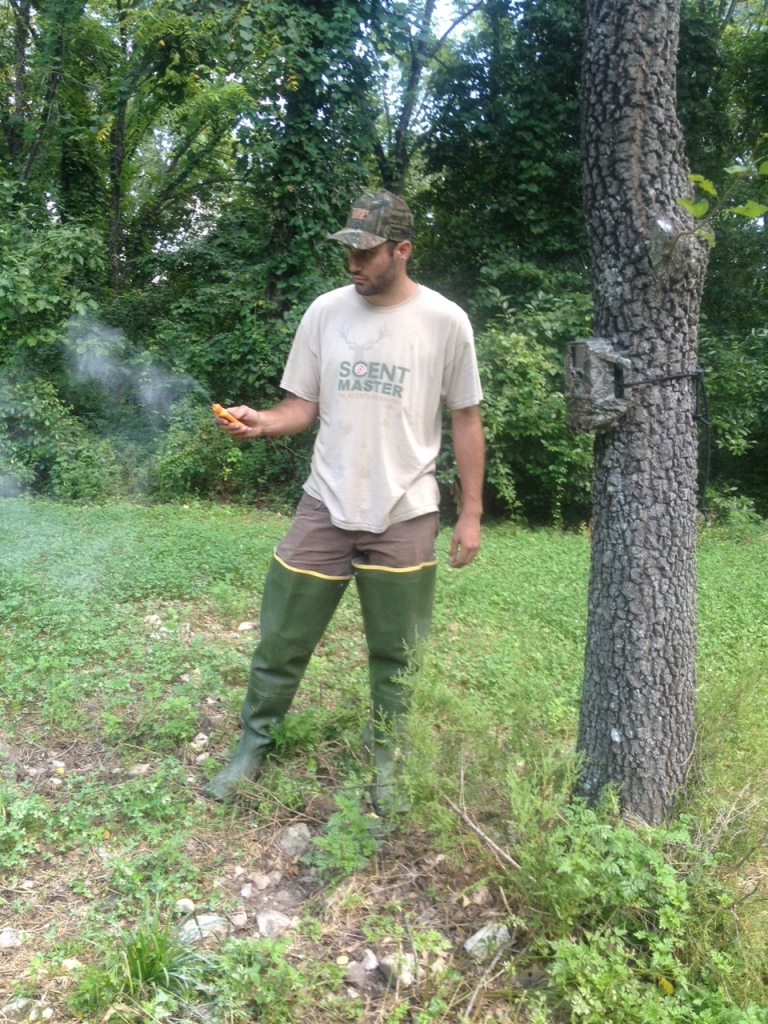
Wearing scent controlling boots and being cautious of the wind are very important in low impact scouting.
How to use trail cameras can vary greatly from property to property. For many hunters, the deer they are hunting may be conditioned to a truck driving by or some sort of human activity. Unfortunately, for the majority of hunters, this is not the case. Many of us are pursuing deer that are not conditioned to human traffic. If the right precautions are not taken, the simple task of checking trail cameras can spook and educate a lot of deer. Hunters who are pursuing these deer need to be extra cautious when entering their property to check trail cameras. Try using these three low impact scouting techniques:
- Approach camera sites with a favorable wind
- Check cameras in the middle of the day when deer are least active
- Leave the least amount of scent as possible
Everyone is excited and eager to see what bucks are showing up at their favorite hunting spot, but don’t barge in without the proper wind and time conditions. If you do have the right conditions to go, make sure you are in clothes that are clean enough to hunt in and don’t be grabbing every limb or stick on the way in. You might even try wearing a pair of hip waders to further reduce your scent. Incorporating these simple steps into your strategy could be the difference that allows you to tag a hit list buck.
Waiting for the velvet to shed,
Clay O’Dell
4 Questions For A Realistic Hit List
As antler development is beginning to wind down, hit lists begin to develop. Hunters have had the opportunity to inventory the individual bucks based on antler characteristics. With individual bucks clearly recognizable, the next step is to develop a strategic plan to tag these bucks. Antler characteristics are just one of multiple aspects that make each buck an “individual”.
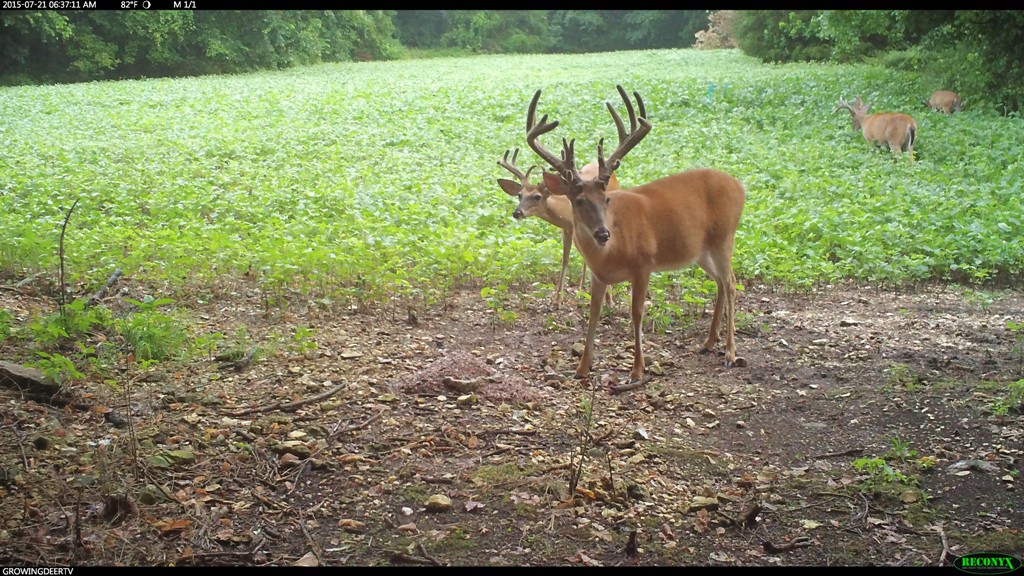
Our #1 hit list buck, Chainsaw, has been very active at this Trophy Rock site.
Each hit list buck exhibits certain characteristics that influence the chances of that deer being harvestable. Some of these characteristics can easily be examined in a series of trail camera photos you have received through the summer months. When examining these photos, ask yourself the following questions:
- When are the bucks being photographed, daylight or nighttime?
- Is the area the buck using accessible to me?
- Can I hunt the deer in transition or over a hidey hole food plot?
- Will the predominate wind allow me to reach my stand undetected?
Ask yourself these questions as opening day nears. Answers to these questions can help you narrow your hit list down further to strictly huntable deer and maximize your opportunities afield. Don’t simply let antlers dictate which stand you hunt, use your resources to determine which hit list buck provides you with the best chance to fill a tag! Be sure to share your success with us here at GrowingDeer.tv.
Enjoying Creation,
Matt Dye
Manipulating Deer Travel Patterns
Deer often take the path of least resistance. They may seem to meander aimlessly when they are browsing, feeding on acorns, etc. However, when they travel from feeding to bedding areas they almost always take the path of least resistance that they don’t associate with danger.
In some areas such as farm country where cover is limited it’s easy to find existing deer trails. Hunters in these areas often place stands along these trails.
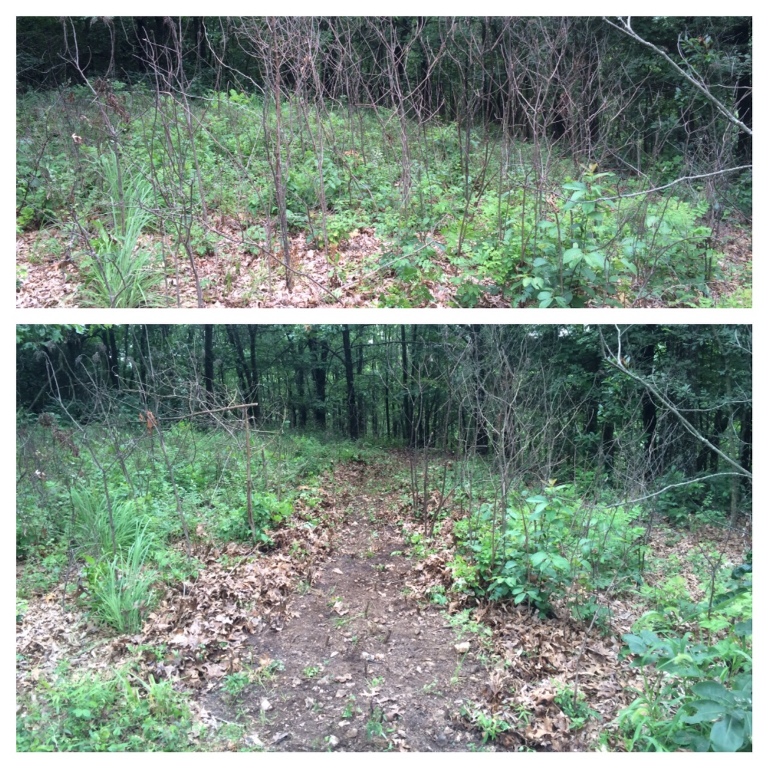
A before and after look at a path made next to one of the treestands.
In areas where the landscape is primarily covered by timber deer tend to walk in general areas because cover is often similar over large areas. In timber stands that are about the same age there isn’t an obvious path of least resistance.
This scenario can work in a hunter’s favor because it is easy to create a path of least resistance where it’s an advantage to hunters! By using a handsaw, weed eater, backpack blower, and/or a garden rake it’s easy to create a path of least resistance! I’m amazed at how fast deer will adapt to trails created using this simple technique.
Keep in mind deer aren’t going to travel hundreds of yards simply to use such a trail. However, if deer pass within 100 yards or so of an area (but not on a specific trail) they will often adapt and bottleneck down to using a path created as described above.
If you are frustrated because deer seem to wander in general areas rather than use a trail try creating a path of least resistance. It’s a great technique that can help add venison to your freezer!
Nicolas Halchin
Managing Bucks
Deer season is fast approaching and most hunters are checking cameras and making a list of mature deer to hunt this fall. However, every year I hear someone complaining that one or more bucks on their property has a funny looking set of antlers and needs to be stopped from reproducing.
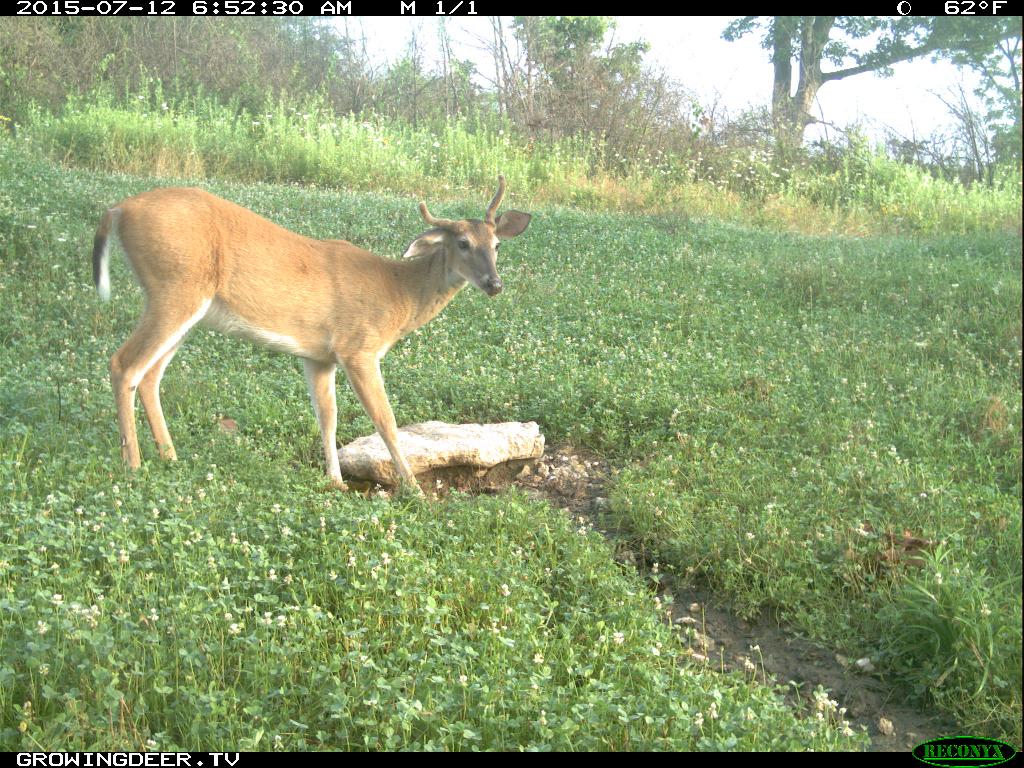
We passed this buck as a yearling and he developed into a nice buck as a 3 year old!
Some hunters label bucks with less than desirable antlers as culls or management deer that need to be removed from the gene pool. Many times these deer are simply young, immature, and have some unique and funky characteristics to their rack. While it may seem like killing a 1.5 year old buck with a freaky frame will result in improving the herd’s gene pool this is rarely, if ever, true. The reality is that removing such a buck from a wild, free-ranging herd is probably like dropping a pebble into an ocean and likely removing a buck that could’ve turned into a dandy.
It’s easy to forget that does make a substantial contribution to the herd’s genetic make-up. Currently, without a known pedigree there’s no way to know which doe and buck matings produced the largest bucks where you hunt. In fact, numerous studies have shown that trying to manage the genetics of a free-ranging deer population has little to no impact on antler quality.
If you wish to help the herd then simply give that “cull” buck good groceries, quality cover, and a pass until he’s mature. I’d be willing to bet that in a few years that weird looking yearling will be a desirable trophy and the memories made watching him grow will be far more rewarding than removing him this fall.
Sowing seeds for the future,
Kevin Shettle
Food Plot Reminders: From Plants To Pocket Knives
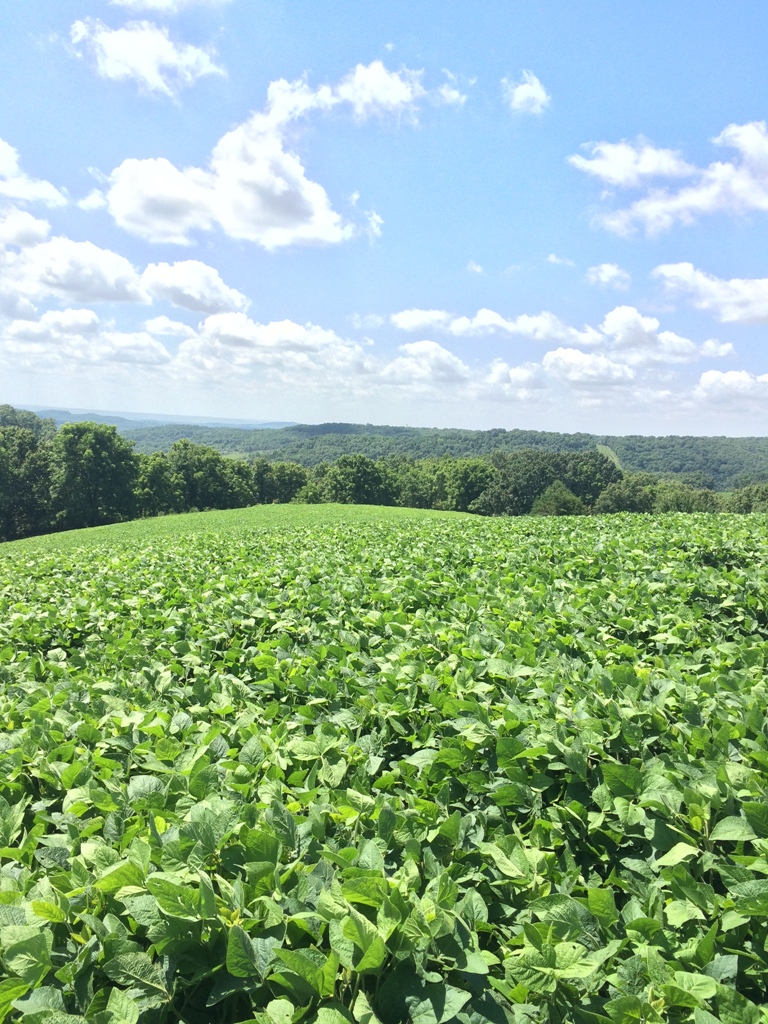
A good food plot program will match the crops you plant to your food plots.
Regardless of whether you already have a food plot program or are just getting started, there are several things to keep in mind.
First and foremost, is to match the crops you plant to your food plots. Different plants require different nutrients, moisture, and amounts of sunlight. Plots that run east-west receive more sunlight than those that run north-south. Additionally, northern slopes retain more moisture than southern ones. Knowing the soil and terrain can make the difference between a great food plot and a poor food plot.
Getting a soil test done and prepping the seedbed before planting allows a better understanding of what you need (if anything) to add to the soil and better guarantees the survival of the plot. However, maintaining food plots is just as important as planting them. Spraying herbicide to reduce competition from weeds and controlling pests will maximize the plants’ growth.
Last but not least, is to routinely service your equipment. It doesn’t matter if it is a pocket knife or a large tractor, maintaining equipment will help make them work more efficiently. Properly maintained equipment is also safer to use.
While planning next year’s food plots use these ideas to not only improve the wildlife’s health but also increase your chance of harvesting a mature buck next fall!
Sowing seeds for the future,
Kevin Shettle
New Bucks Equals New Beginnings
Each summer we all anticipate checking trail cameras to see which bucks returned and what new bucks are in the area where we hunt. This builds great anticipation leading up to season. It makes me wonder which buck I may get an opportunity to tag.
As the summer progresses bucks show more of their antler growth potential. I find it very enjoyable to watch bucks develop that I’ve known for years and am constantly looking for new bucks that may be major characters in my life long hunting story.
One of the most rewarding things a whitetail hunter can experience is tagging a buck that he’s been patterning. Being able to experience two, three, or even four years of knowing a certain buck makes finally figuring him out that much more enjoyable.
This past month, here at The Proving Grounds, the bucks have been putting on a lot of antler. We recognize some of the bucks from past years and others either changed antler configuration or shifted their range to include a portion of The Proving Grounds. There has been a new buck showing up that has caught our attention. As he continues to grow we will keep a close eye on him and he just might make his way onto our hit list.
Starting a story with a new buck is always fun and exciting. Do you have a buck that you are watching this summer?
Patiently waiting for fall,
Kyle Karcher
Tips To Avoid Ticks And Chiggers
Ever get home after hanging treestands, checking trail cameras, or just being in the field during the summer months and feel like your skin is crawling? Have you ever been outside and days later discovered extremely itchy bug bites from an unknown source?
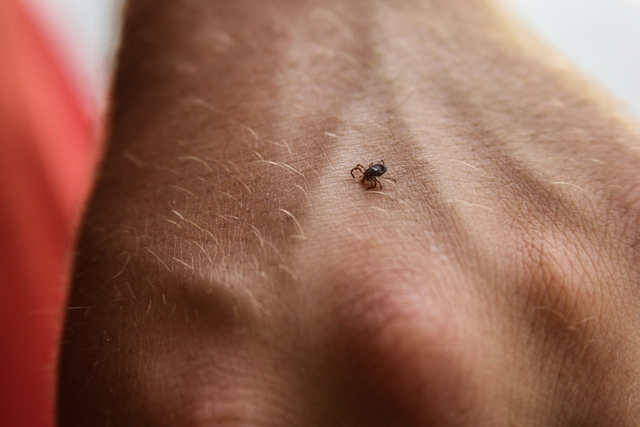
Be diligent about searching for and removing ticks after being in the field.
From the first warm days of spring until the first hard frost during the fall, ticks and chiggers are very annoying. They also can transmit several diseases to humans. Whether turkey hunting or preparing for deer season, steps should be taken to avoid being bitten by these parasites.
Because treating these bug bites can be troublesome, prevention is the best way to deal with ticks and chiggers. A few techniques I have found over the years to avoid being bitten by chiggers and ticks include:
- Wearing long socks and tucking pants into them
- Tucking shirts into pants
- Wearing light colored clothes to spot ticks more easily
- Spraying clothes with Permethrin bug repellent or Deet products before going into the field
- Taking a shower and checking for ticks as soon as returning home
Research and personal experience has shown that taking these steps before going into the field can reduce tick and chigger bites by 90%. That’s an easy way to ensure we stay healthy to enjoy deer season!
Nicolas Halchin
The Benefits Of Fruit Trees
A food source that many species of wildlife find very attractive is fruit! Most species of fruit are full of sugar and deer and other critters certainly have a sweet tooth! For example, ripe mullberry fruit is very sweet and usually ripens during June throughout most of the whitetail’s range. Mullberry, like most fruit trees, does best when they receive full sun. Hence, mulllberry trees are often found on field edges or near other openings.
The Reconyx UltraFire video clip shown below was taken beneath a mulberry tree that was dropping ripe fruit. After watching this video, imagine the attractive power of having a small plot of trees that produce ripe fruit during hunting season! That’s why we created tree plots with fruit trees from the Flatwood Natives wildlife tree nursery.
Watch these Reconyx clips taken at The Proving Grounds during early June and count the number of species attracted to the fruit!
Patiently waiting until fall,
Kyle Karcher
Small Food Plots For Big Results
Young soybeans are one of the most attractive plants to deer. In areas with a high deer population or in small food plots it can be difficult to maintain a healthy stand of soybeans due to heavy browse pressure. This problem can be solved with trigger finger management (shooting more deer) or using a small electric fence and protecting your soybeans.
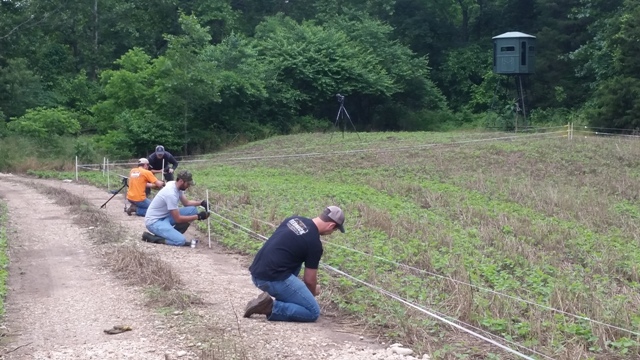
Assembling the Hot Zone fence within bow range of the Redneck Blind will create a great late season hunting spot!
Recently we assembled a Non Typical Hot Zone electric fence around one of our food plots to help protect a section of our soybeans, while also ensuring a late season hunting hot spot! Our plan is to feed the deer all summer with the soybeans outside of the fence and then drill Eagle Seed Broadside through the browsed beans in August. This will provide green forage for deer through the fall and winter. During the colder months of deer season when the deer are in search of a high energy food source we’ll open up the fence. With this process we’ll be feeding the deer year around with a very high quality food source .
Using a small electric fence like the Non Typical Hot Zone fence gives hunters the ability to protect soybeans until they’ve matured and produced pods. During the late winter there aren’t many food sources more attractive the standing soybeans!
Daydreaming of whitetails,
Adam
Bean Plot Damage
From spring until early summer, many hunters and farmers are hard at work planting food plots and agricultural fields either to hunt over or to harvest for income.
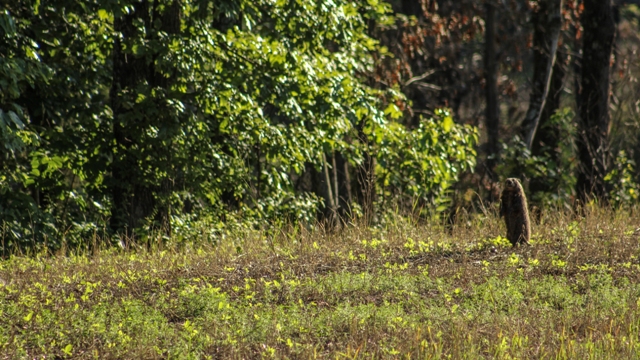
Groundhogs can damage food plot crops quickly, depriving deer and turkey access to quality forage.
Most hunters and farmers focus on the needs of the plants, such as fertilizer, ample rainfall, and lack of competing vegetation, but they fail to identify one major threat to young crop fields. Consumption of young plants by pest animals such as groundhogs can wipe out large sections of a field to the point that they may need to be re-planted.
This can be costly to the landowner as well as reduce the amount of quality forage available to the desired game animals. If no action is taken, groundhogs can remove the forage from several acres rapidly! This can be devastating to deer and turkeys that depend on that food source during the growing and late season!
Where legal, trapping and shooting of groundhogs soon after the seeds germinate might be what’s needed to allow the crops to be productive.
Nicolas Halchin



